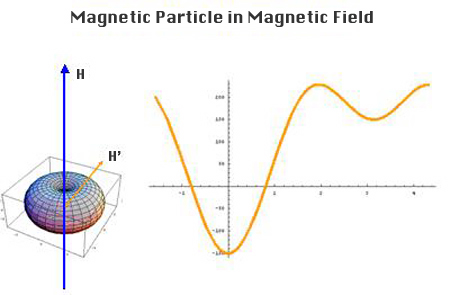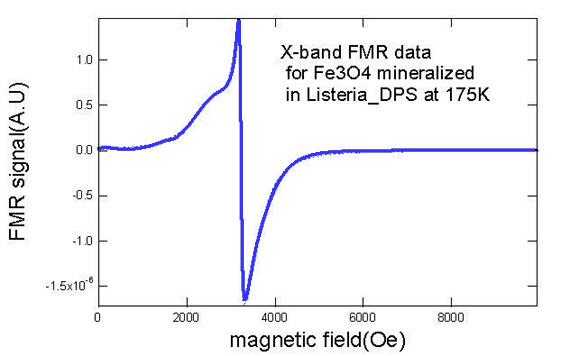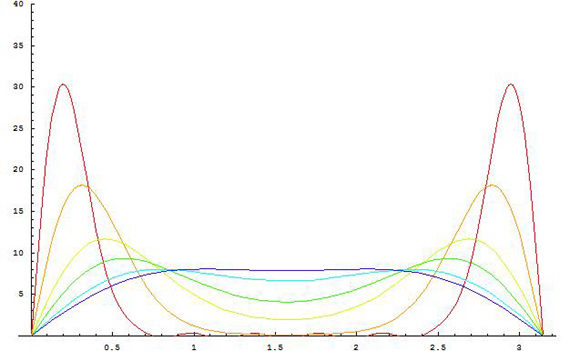EMR for magnetic nanoparticles
EMR (electron magnetic resonance) is a technique related to EPR (electron paramagnetic resonance) and ESR (electron spin resonance). Unlike with paramagnetic materials, in ferromagnetic (ferrimagnetic) materials the atoms have strong interactions with their neighbors. These interactions include exchange interaction, demagnetizing and anisotropy fields. If we measure ferro (ferri) magnetic materials by EMR, these strong interactions will cause domain walls to move or generate spin waves in the material. Instead of a sharp EPR line, we will observe a broadened EMR line.
We use EMR to look at nanoparticles mineralized in protein cages. Because nanoparticles have small anisotropy energy (comparable to thermal energy), the energy for particles in magnetic field is close to thermal energy. As a result at high temperature (200 K) with low field (500 Oe), particles tend to have a random easy axis and moment distribution. By apply big field or going to cool down temperature, we can align particles to a certain degree.



Methods:
1. Temperature dependent EMR for magnetic particle. Because nanoparticles have small anisotropy energy comparable to thermal energy, low temperatures are used. At different temperatures, thermal energy will excite particles into different equilibrium states which would change the distribution of the magnetic moments and easy axis directions.
2. Frozen sample angle dependent EMR. By applying magnetic field we can align the particles easy axis. Freezing the nanoparticles in a liquid immobilizes the protein cages and hopefully the easy axis of the particles. Change the angle of the sample in the EMR machine allows us to measure the resonance for the particles internal field (anisotropy field) aligned with applied field at different angles, so the resonance line will shift. How much the line shifts depends on anisotropy field.
3. Different band EMR: Currently we have EMR machine that works at S,X,W,Q,D bands.
For a tutorial on EMR:
http://www.chemistry.nmsu.edu/studntres/ chem435/Lab7/intro.html
